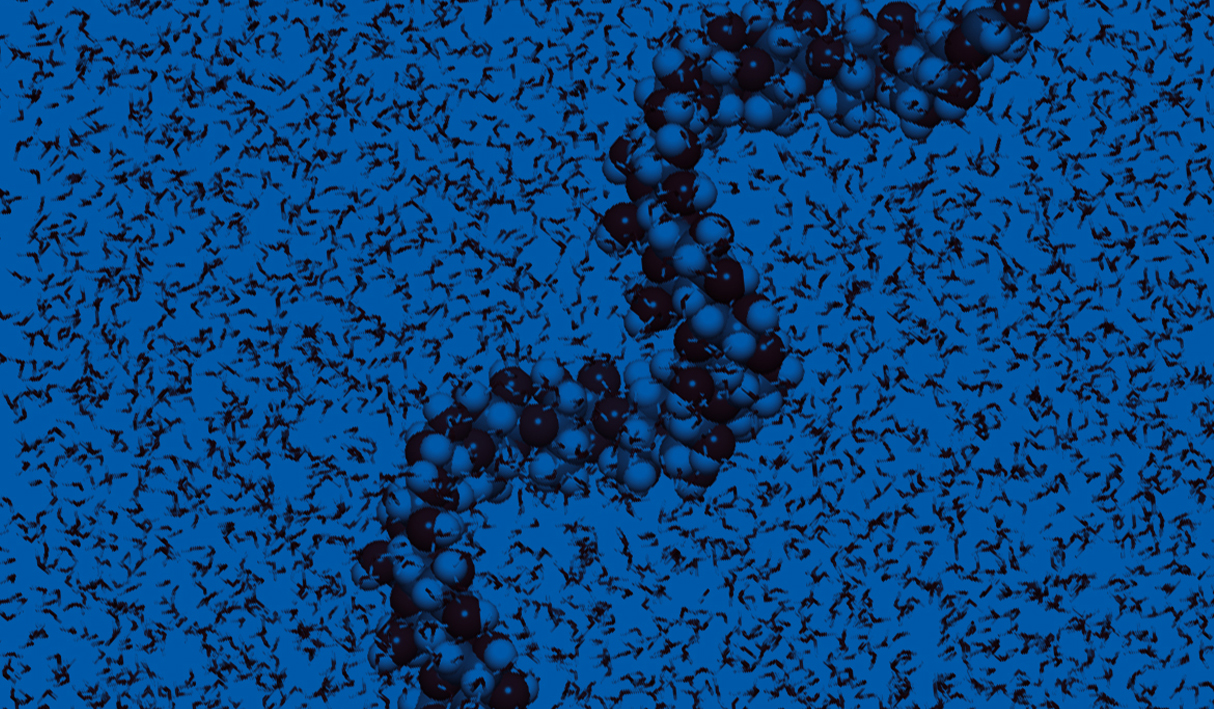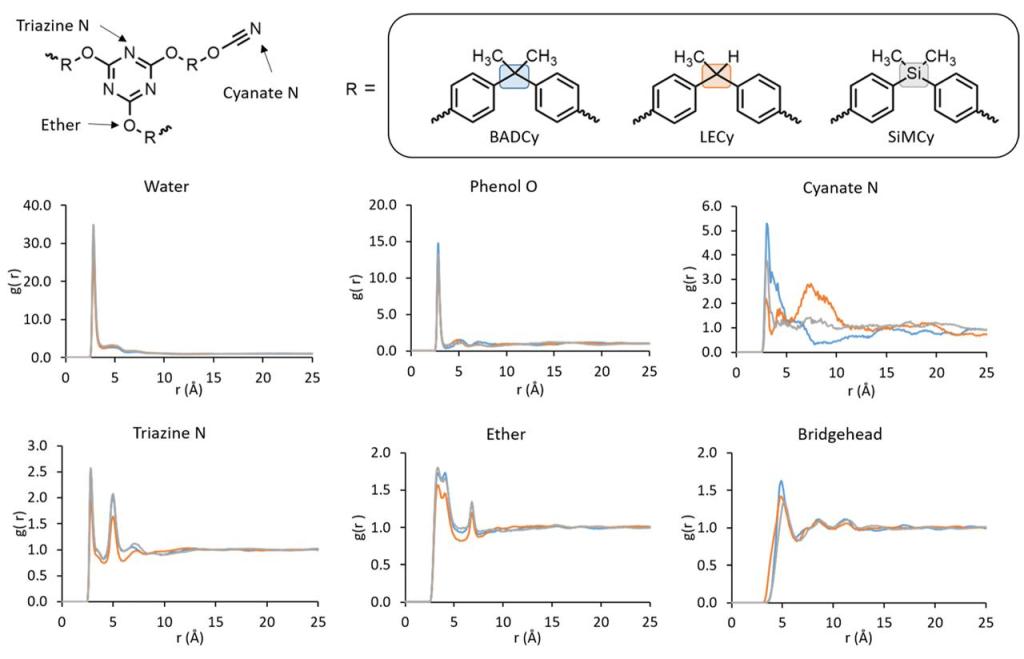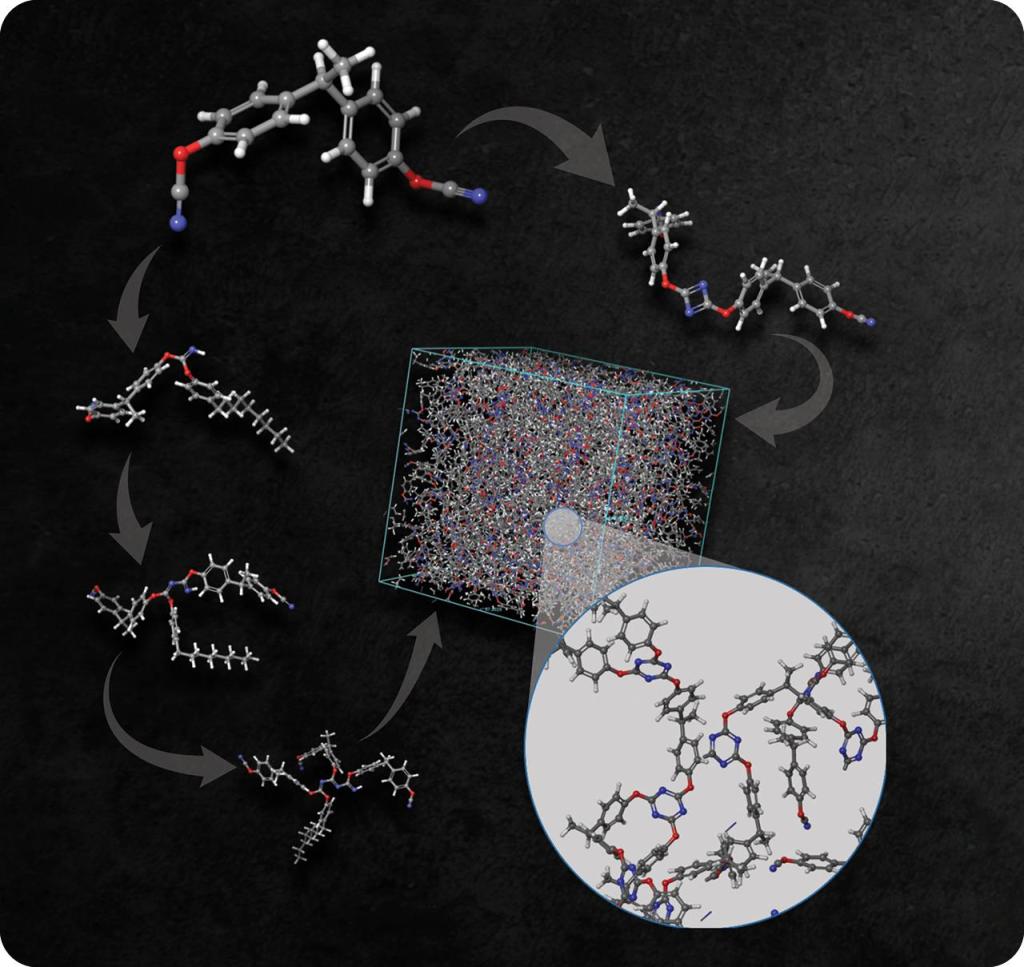Exploration and validation of polycyanurate thermoset crosslinking mechanisms
Molecular dynamics simulations accelerate the development and optimization of nextgeneration aerospace materials.

Executive Summary
- Accurately predicted key thermophysical properties such as glass transition temperature (Tg), density, and coefficient of thermal expansion for the polycyanurate systems
- Built realistic polycyanurate models for the first time from its constituent di(cyanate ester) monomer rather than using prebuilt triazine moieties
- Effectively modeled water uptake and location in thermoset matrix by penetrant loading and radial distribution function analysis
- Proposed an alternative water uptake mechanism for polycyanurate that was not observed via experimental methods
- Enabled rational design of high performance thermosetting polymers
Challenges
Thermosetting polymers such as polycyanurates are important for high temperature applications in aerospace because of their performance properties, such as high glass transition temperatures (Tg) and exceptional flame resistance. Modeling and simulation efforts have enabled rapid screening of candidate materials with targeted properties for high performance applications without dedicating the significant time and resources required for wet chemistry. However, there are challenges for predicting properties of thermosetting polymers like polycyanurates:
- The reactions, such as curing/crosslinking, are often complicated and require multiple factors to consider
- Iterative crosslinking simulation for large cells containing thousands of reactive groups was not possible until recent years with the advances of GPU-accelerated molecular dynamics (MD) simulations
- Generating a realistic model system is paramount in the prediction of properties and study of the dynamics, however, there are exceedingly few examples of in situ crosslinking of di(cyanate esters) for polycyanurate systems
Approach
Scientists from Air Force Research Laboratory (AFRL) and Schrödinger worked together to build realistic polycyanurate models from its constituent di(cyanate ester) monomer rather than using prebuilt triazine moieties, as well as explore the crosslinking mechanisms. All chemical models were built and simulations performed using the Schrödinger Materials Science Suite and Desmond MD system:
Results
This work uses MD simulations to form polycyanurate networks in order to predict thermophysical properties and probe water uptake and aggregation behavior at the atomistic level. The predictive power of this model is considered adequate for further study of other polycyanurate systems, whether in formulation or synthesis of novel monomers to evaluate properties like water uptake or for mechanical property prediction of systems employing these and other cyanate ester materials.
- Thermophysical properties (Tg, density, CTE) of the LECy systems crosslinked via the two different mechanisms aligned well with experimental data
- Multiple thermophysical properties were probed for BADCy and SIMCy systems, and the simulated data showed rank ordering in line with the experiment
- Water overwhelmingly tended to aggregate together in free volume, rather than closely associated near specific moieties. However, polar moieties like triazine rings and phenolic groups showed an affinity to the water and tended to reside on the periphery of the free volume where the water is located
- New hypothesis was proposed: Increased hydrophobicity is the driving factor in the decreased water uptake of SiMCy rather than a change in free volume in the SiMCy monomer

References
-
Polycyanurates via Molecular Dynamics: In Situ Crosslinking from Di(Cyanate Ester) Resins and Model Validation through Comparison to Experiment Levi M. J. Moore, Neil D. Redeker, Andrea R. Browning, Jeffrey M. Sanders, and Kamran B. Ghiassi, Macromolecules 2021, 54, 13, 6275–6284
*The figures were published in the referenced paper. Copyright ACS Publications.
Software and services to meet your organizational needs
Industry-Leading Software Platform
Deploy digital drug discovery workflows using a comprehensive and user-friendly platform for molecular modeling, design, and collaboration.
Research Enablement Services
Leverage Schrödinger’s team of expert computational scientists to advance your projects through key stages in the drug discovery process.
Scientific and Technical Support
Access expert support, educational materials, and training resources designed for both novice and experienced users.

